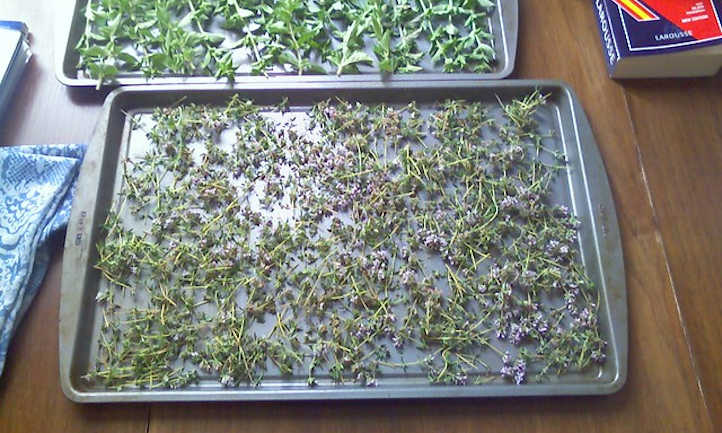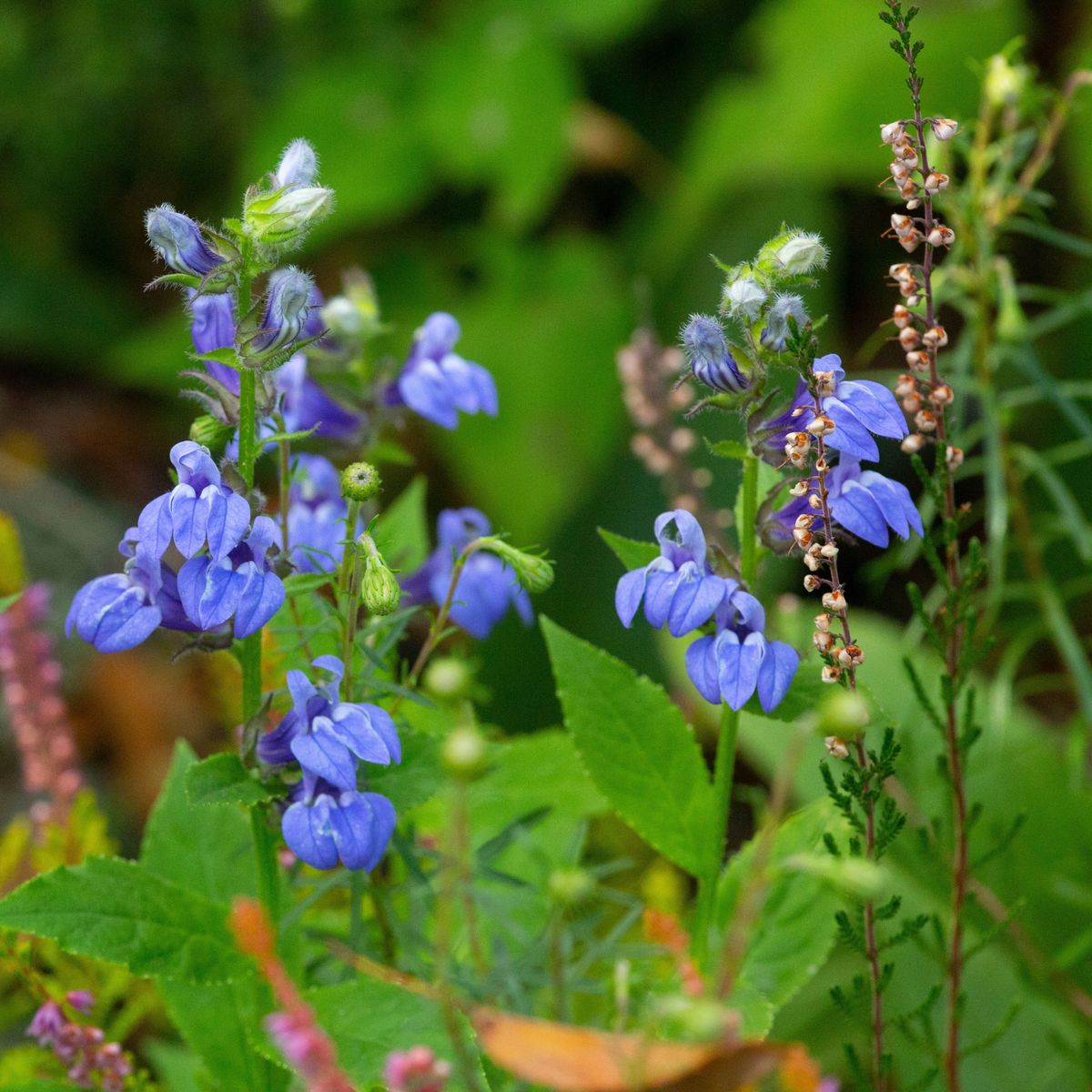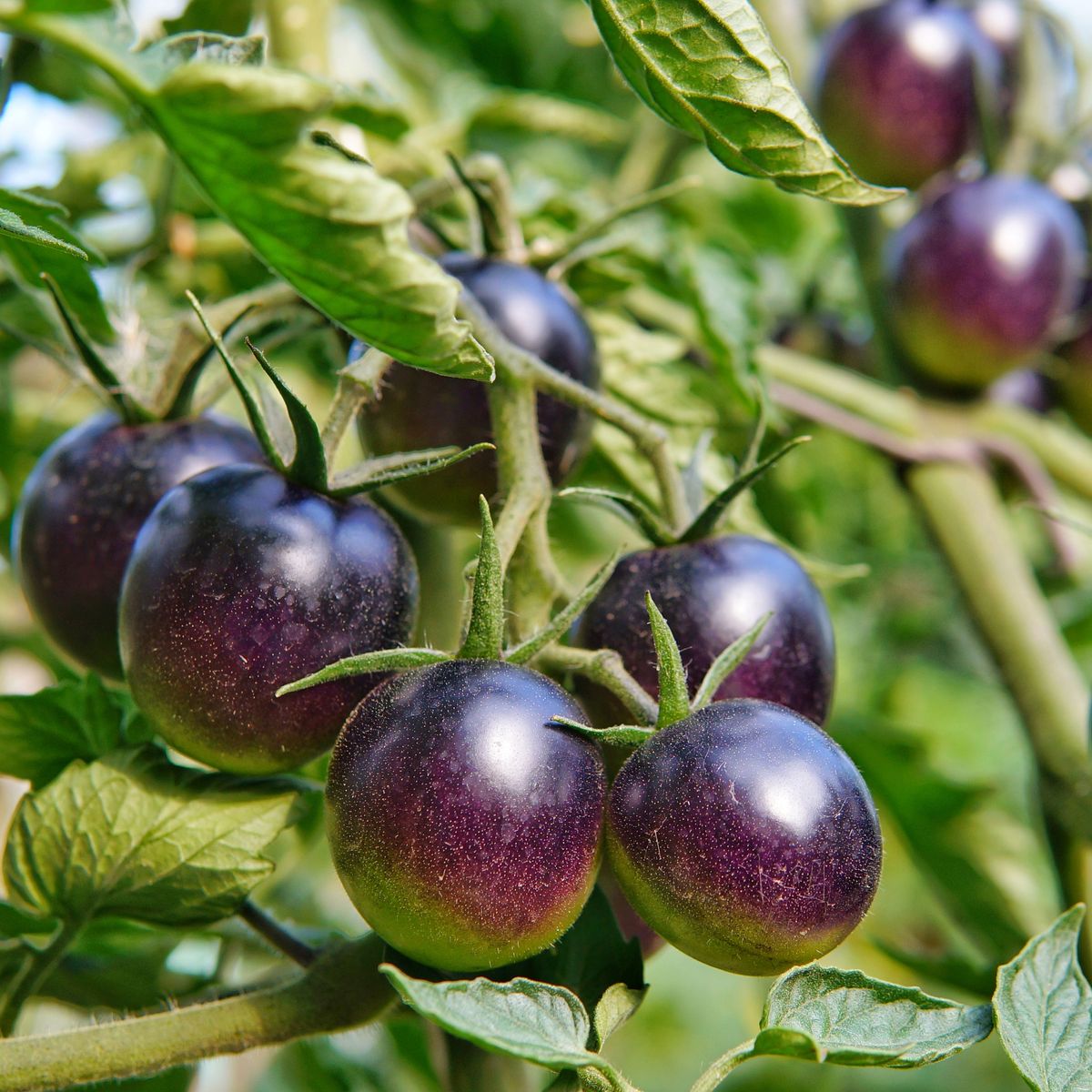Thyme is an exceptional herb to grow in the garden and is a fragrant addition to many culinary dishes. If you are new to growing thyme in your garden or love cooking with this herb, it is important to know when and how to harvest thyme.
Thyme has some distinctive varieties such as garden thyme (Thymus vulgaris), lemon thyme (Thymus citriodorus), caraway thyme (Thymus herba-barona), or wooly thyme (Thymus psuedolanguinosus). You may want to search your local nurseries for thyme, as this plant can be a little difficult to propagate if grown directly from seed. If you have a gardener friend, ask for a cutting from their thyme plant. This is how I started cultivating my lemon thyme!
Thyme originates from the Mediterranean and is easy to grow, low maintenance, and drought tolerant. You will want to grow thyme in a location with full sun and well-drained sandy soil. Some gardeners grow thyme in containers to bring indoors during the winter or in herb gardens next to rosemary, oregano, parsley, and sage.
It can be exciting to have direct access to this culinary herb but keep in mind that harvesting thyme at the wrong time or even overharvesting can cause damage and slow its growth. Properly harvesting thyme and the occasional prune can encourage more growth and create a full, bushy, and happy plant!
Not only will we provide tips on harvesting thyme, but we will cover methods of storing fresh and dried thyme for long-lasting flavor. Now let’s learn more about how to enjoy your bountiful harvest!
When Should I Harvest Thyme?

First question, how old are your thyme plants? If you are in the first year of planting thyme, it is recommended to be very (very!) sparse and light with harvesting. This first year is key for letting the plants establish so that you can enjoy years of delightful harvests! Feel free to take a few small sprigs from the tip of the thyme or a few leaves to flavor your dishes every once in a while. Keep in mind that your plants are still a baby and cannot tolerate too much harvesting in their first year in the garden.
Since there are many fun varieties of thyme to cultivate and they vary in height. We recommend looking at the width of your thyme plant. If the thyme is at least 4-5 inches across in diameter, it has matured and is ready for harvest!
You can harvest fresh thyme periodically throughout the growing season, spring and summer. For the most flavor from your herbs, trim cuttings right before or as the plant flowers. The best time of the day to harvest thyme is on a sunny morning after the leaves are dry from any dew or moisture. The morning provides the most fragrance in thyme. Avoid harvesting during the winter months when the plants are dormant and growing slowly.
If you are growing thyme as an annual, or in colder regions outside of its growing zones, it is recommended to do a major harvest in your garden right before the first frost. Thyme can tolerate a light frost but for successful storage and delicious flavor, try to harvest at the end of the growing season before any cold temperature and moisture changes.
How To Harvest Thyme
You will need sterilized pruners or garden shears when you are ready to harvest from your thyme plants. When you are harvesting thyme, you are creating an open wound so clean gear will help keep your plants healthy. If you pinch or tear off leaves or stems, the damage to your plant can create a weak point for diseases or infestations (yikes!).
Take young fresh sprigs or leaves when you are harvesting. Avoid cuttings of the woody parts of the plant. These woody sections are less fragrant, not ideal for culinary uses, and are an essential component for the plant to regrow. Also, avoid harvesting after the plants have gone to seed in the fall. The flavors will be less than perfect for cooking with. During the summer, you can remove the flowers to prevent them from going to seed.
Do not take more than 1/3rd of the plant at any given time. Thyme thrives from come-and-cut again harvests of a sprig or two. This light-cutting method will stimulate growth into a full and bushy shape. At any time of harvesting, be sure to space your collections from all around the plant rather than just picking from one location.
Cut above a leaf node, this will encourage bushier growth and contribute to more opportunities for future harvests!
How To Store Fresh Thyme

Now that you have your freshly harvested thyme, how do we store it? First, resist washing your harvest. This will rinse off the fragrant oil on your herb. To maximize the thyme flavor, try to use it within the first 3 days of harvesting. Let’s explore how to prolong its flavor if you have an abundance of herbs.
To maintain freshness, try to keep the leaves on the stem while storing. To store in the fridge, you can wrap the stems in a damp paper towel and seal them inside a plastic bag. This method will keep the thyme fresh for 2 weeks. You can place the stems in a glass jar with an inch of water for longer fridge storage. This can last in your refrigerator for up to 3 months as long as you periodically change the water out.
To freeze fresh thyme, you can place your herb directly into a freezer bag. Then you can pick off the tiny leaves whenever you are cooking and need fresh thyme. Another freezer method is to remove the leaves from the stem and place them into ice cube trays filled with water. Once the ice cubes are frozen, pop them into a freezer bag for further storage. The fresh flavor can last 6 months in the freezer.
How To Dry Thyme
There are several methods to dry thyme such as using a food dehydrator, hang-drying or air-drying. If you wish to wash your herbs of any debris, place them on a towel afterward and pat dry. Let them completely dry out for at least 2 hours from their rinse.
Keep the leaves on the stems for food dehydration, if you don’t the tiny leaves might fall through the trays. Preheat the dehydrator to its lowest temperature, around 100 degrees Fahrenheit. Lay the cuttings in a single layer on the trays. This process can take anywhere from 1-4 hours to dry so be sure to check frequently. When the leaves are crispy and crumbly, that is an indication that you are done with the drying process. Let the herbs cool down for an hour before removing them from the dehydrator.
For hang-drying, you will want to use long stem cuttings of thyme that are at least 6 inches long. Tie 6-8 stems together with string and hang upside down in a location that is warm, dry, and out of the direct sun. Sometimes the leaves drop off the stem in this drying process. If you want to preserve these tidbits, tie a paper bag over the bundles, cut a few air slits into the bag with scissors and this will catch any of those loose thyme leaves. If you have several bundles, make sure to space them a few inches apart to allow for air circulation. This process takes 2-3 weeks for the herbs to completely dry into their desired conditions when the leaves are dry and crumbly.
If you prefer to dry the thyme leaves without the stems, you can place them on parchment paper on a cookie sheet. Stir the leaves around every 12 hours and in 2-3 days, the leaves will be dried.
Storing the dried herbs is the final step! You can place them with the stem or remove the leaves into a clean, dry airtight container. If you remove the dried leaves from the stems, this can be a tedious process because the leaves are fragile and can be crushed.
Place the container in a dark, dry location. You may want to check on the herbs in a few weeks and search for any residual moisture that may have been released in the containers.
Frequently Asked Questions

Q: How do you cut thyme?
A: Use sterilized garden scissors or shears and cut a sprig that is several inches long above a leaf node or trim a few leaves off. Avoid cutting the woody stems.
Q: What do you do with thyme in the fall?
A: There are a few options after you have harvested your thyme. If you live in Zone 4 or a cold region, consider planting thyme in a few potted containers that you can bring indoors. Place it in a sunny location and it will keep growing throughout the winter season. Or you can cover the thyme plant in plastic if it’s outside in the ground. To prep the plant for overwintering outdoors, pile several inches of mulch and soil around the base of the thyme to keep the roots warm.
The Green Thumbs Behind This Article:










